Quick, what do these men have in common?
Mendel Mokhel Sfarim
Zeev Jabotinsky
Shalom Aleichem
King David
David Remez
Well, not much, except that they each have streets named after them in Jerusalem. Take a left on Mendel Mokhel Sfarim, left on Zeev Jabotinsky, another left on Shalom Aleichem, right on King David, and veer left on David Remez Street. Where does that take you?
The first five streets I took on this morning’s early run in Jerusalem.
Someone once told me, “You know how you can tell someone is a runner? They have usually told you they’re a runner within the first five minutes of speaking with them.” Well, I’m an occasional runner, and went for a beautiful early morning jog in Jerusalem. It took me out of the hotel and through some winding streets. I eventually made my way up a long hill leading to Jerusalem’s Dung Gate, and the entrance to the Kotel Plaza.
I was here about 7 hours earlier. Last night, along with a group from UJA, we went on a walk to the Western Wall at night. While there, I had spotted an Aroma Cafe, tucked away near the Dung Gate, from which patio I imagined you could probably sip an Americano and watch the people entering for morning prayers. I made a mental note to run there in the morning, sit for a quick coffee, and then run back to the hotel ready to start the day.
Well, this morning I made my way through the Dung Gate, climbed the steps up to the Aroma and, wholly out of breath, encountered a closed gate with a sign: “Dear guests, we are sorry, we are closed today, as it is the Fast of Esther.”
I forgot. Tonight was Purim, and the day before the eve of Purim is traditionally observed as a fast day. It commemorates the fast that Queen Esther undertook to prepare herself to approach her husband, King Achashverosh, and ask for his mercy, to stop Haman from killing her people: the Jewish people. And it worked. Rather than the Jews being killed, Haman and his family were hanged.
Dejected from the lack of caffeine intake, I took a brief break anyway on the Aroma rooftop, wondering where to go next. As I looked over at the crowds massing by the Kotel however, I looked to the right and noticed the black dome of the Al Aqsa Mosque, quietly hovering nearby aloft the Temple Mount.
The setting made me think about persistence.
Persistence
Persistence can be defined as “the firm or obstinate continuance in a course of action in spite of difficulty or opposition.” I think of it as the rebellion of the soul against the odds, or the refusal to let history be written without your hand on the pen.
Today in Jerusalem, I saw different forms of persistence, both for better and for worse.
For the worse
I kept my eye on the Al Aqsa Mosque because of what the name, today, evokes. The Hamas operation on October 7 was called “Operation Al Aqsa Flood.” It was a goal, in the name of Al Aqsa (the Arabic name for Jerusalem) to rid Israel of the Jewish people, and liberate the holy city. It was a genocidal operation, intended to kill (which it did), main (which it did), and eradicate (which it did not). Despite the damage left in the operation’s wake, Israel is still here. In some respects, it is stronger than ever.
But the Palestinian insistence to rid the world of the only Jewish State has persisted for too many generations. Despite early overtures by prominent Arab families in 1917 (including King Faisal, who then welcomed a Jewish and Zionist presence in the Middle East), it quickly became apparent to Arab leadership - from Hajj Amin el Husseini to Yasser Arafat to Mahmoud Abbas to Yahya Sinwar - that the Jewish state was not going anywhere. They had only one choice: Accept the Jewish State and live in perpetual peace? Nah, too easy. They would persist in an armed struggle against the Jews. It did not matter how many Palestinian lives would be lost, as long as the Jews knew they were disliked.
The Palestinians are losing, but have maintained this struggle despite making effectively no gains. They have kept their people in refugee camps, in squalid conditions, without hope, all for the purpose of sticking it to Israel. This has been persistence for the worst.
Sadly however, their persistence has also terrorized Israel. Decades of plane hijackings, bus bombings, suicide bombings, stabbings, rocket launches, and now kidnappings, have certainly harmed the people of Israel in various ways. They are forced to spend too much money on their army, enlist their children, and sometimes look over their shoulders, because of this persistence by many of the Palestinian people to cut their nose to spite their face. Harm Israel, even if it harms us more. Just look what happened to Gaza.
This is the persistence represented when I look at the Al Aqsa Mosque towering over my failed Aroma visit. It was an attack that, though terrifying, overwhelming, and devastating, failed. The Al Aqsa Flood receded; Jerusalem remains in our hands. I could still go for a run, try buy a coffee, ultimately put on tfillin, kiss the Kotel, recite a short prayer, and then run back to the hotel via Jerusalem’s Jewish Quarter (settling for less-delicious hotel coffee).
The Palestinian persistence in trying to rid the world of Israel is, objectively by any measure, persistence for the worse.
For the better
My day in Jerusalem today, however, highlighted what persistence for the better can look like.
It began by recalling our observation of a fast day in commemoration of something good that happened 2,300 years ago. This is a type of persistence of memory that is worth celebrating. It is a reminder that salvation comes from boldness, and an unwavering belief in something greater than fear.
Later in the morning, I joined the UJA group for a meeting with the inimitable Matti Friedman. Matti is warm and brilliant, and the group consensus was that we could have listened to him all day.
Matti spoke about the difference between fact and fiction when it comes to reporting the news, and the way the art of journalism has been replaced by advocacy. In 2014, he wrote an essay that quickly went viral, about how insane and one-sided the news coverage of Israel had become. He detailed the complexity of the situation on the ground in Israel, and how difficult it can be to capture the dynamics in a short article about a discrete topic. This leads, more often than not, to the distortion of the Jewish side of the story. Always the Jewish side. But though the media maintains its strange bias against the Jewish State, it has pushed pro-Israel and pro-Jewish voices to keep their eye on the ball, and to ensure that the truth is always, in some way, out there.
Our day continued at Israel’s new National Library building. Opened in late 2023 (the opening was overshadowed somewhat by the current war), the building sits next to the Knesset, and is not only magnificent on the outside, but is breathtaking inside. It is an effort to maintain Hebrew and products of Jewish and Arab minds emanating from Israel. It evokes the persistence of knowledge, and of the need for the written word and the wisdom it contains to pass down from one generation to the next.
I also had the unique experience of listening to a recitation of Megillat Esther (the story of Esther and Purim) recited outside, on the street, at a hostage-family encampment near Prime Minister Netanyahu’s residence in Jerusalem. This unique way to hear the megillah read, with cars passing by, trying to drown out the name of Haman - a figure who symbolizes an evil we know all too well in 2025 - demonstrated to me a persistence of action. All over the world tonight, Jewish communities read the same text, something they have done each year for 2,300 years. By commemorating Purim, which includes not only reciting the megillah, but also dressing up, giving presents to others, and giving charity to the poor, the holiday is a declaration that Jewish existence is not just about survival, but about living fully despite every attempt to erase us.
Har Herzl
Before Purim began, I went to Har Herzl (Israel’s national memorial site) to pay my respects to some of the soldiers who died fighting on behalf of Israel since 10/7.
When visiting a grave, there is a Jewish tradition of placing a small stone on top of the tombstone of the person you have visited. It is a small act to show others that someone has come to visit; that the person has not been forgotten. A stone outlives a flower, and some graves are therefore completely covered in stones.
For example, this morning I also stumbled on the grave of Oskar Schindler. It is clear to anyone who visits that he is regularly visited, and not soon forgotten:
A rock is the ultimate symbol of resilience and persistence: it will remain on the grave, through water and wind, until it is intentionally removed. Otherwise, it will sit and serve its purpose, remind the world of who lays beneath.
On Har Herzl, upon arriving at the graves of some of the recently deceased Israeli soldiers, I was dumbstruck. Unable to move forward, unsure how to act. Laid out before me were at least 100 graves of mostly young men, the majority of whom were born between 2003 and 2006. Their graves were freshly dug, their tombstones newly engraved, and it was clear by any objective measure, that they had been visited, and that they are loved.
Their graves were not only adorned with stones. Pictures had been framed and placed, along with their favourite drinks and food. QR codes are found on some of the graves, that when scanned, will give you the soldier’s life story. Their photo stared back at you as you walked past, leaving you breathless and wondering why so many of these young Jewish men and women needed to be taken, on account of the persistent desire by our enemies to immiserate our lives. Why should so many young parents, children, and siblings, suffer, because of a sick reluctance of the Palestinian people to accept Israelis as neighbours just because they are Jews?
But in responding to this hatred, and in recoiling in horror from the deaths of their loved ones, these graves serve as an example of persistence of achdut - unity. The mother who attends each day to clean off her son’s grave, the sister who replaces old flowers nearby with a fresh bouquet, and the friend who sits quietly, remembering the good times they shared only just 525 days ago. This is a tragic but beautiful persistence of memory, of action, of love, and of a hope that things will get better. It will happen if we continue to persist in doing the things that bring us strength.
Day 4 in Israel
Whether running through the twisted alleyways of an ancient city, being denied a latte in Al Aqsa’s shadow, hearing from a prominent voice in our community, taking part in celebrating a prominent Jewish holiday, or simply being present at the grave of someone who I did not know, I was reminded of the consistent persistence in our lives.
The story of Israel itself is a story of persistence: an unbroken chain of resilience stretching from the ancient prophets to the pioneers who drained the swamps and made the desert bloom. It is the embodiment of a people who have wandered, suffered, and been exiled, yet never lost their sense of belonging to the land promised to them. From the ashes of the Holocaust, when the world saw Jewish survival as improbable, Israel emerged, not as a gift, but as a hard-won necessity. Every war fought, every terror attack endured, and every diplomatic battle waged is a reminder that the Jewish state was not granted permanence by the world; it exists because generations have willed it to exist. Zionism is not a relic of history but a living, breathing force; one that calls upon each generation to defend and nurture what was nearly lost too many times before.
The persistence of Israel is not just about survival; it is about thriving in the face of adversity, about building a nation that reflects Jewish values while standing as a beacon of progress and innovation. It is about raising children who, even under the shadow of threats, can dream freely. It is about reviving an ancient language, turning a desert into a technological powerhouse, and refusing to allow millennia of persecution that continues to this very day to define Jewish destiny.
Israel stands - in fact, soars - because its people understand that sovereignty is fragile, that safety is never guaranteed, and that complacency is not an option. The struggle for Israel’s future is not separate from Jewish history; it is its continuation. Just as Jews have always refused to disappear, Israel, too, refuses to be anything less than eternal.
Jerusalem has always been a stark reminder of this persistence. An ancient city consistently updated and rejuvenated. The glistening Jerusalem stone, even when hidden at times by the hostage posters and stickers, nevertheless reminds us that we have overcome challenges in the past, and yet here we remain, ready to tackle the next day.





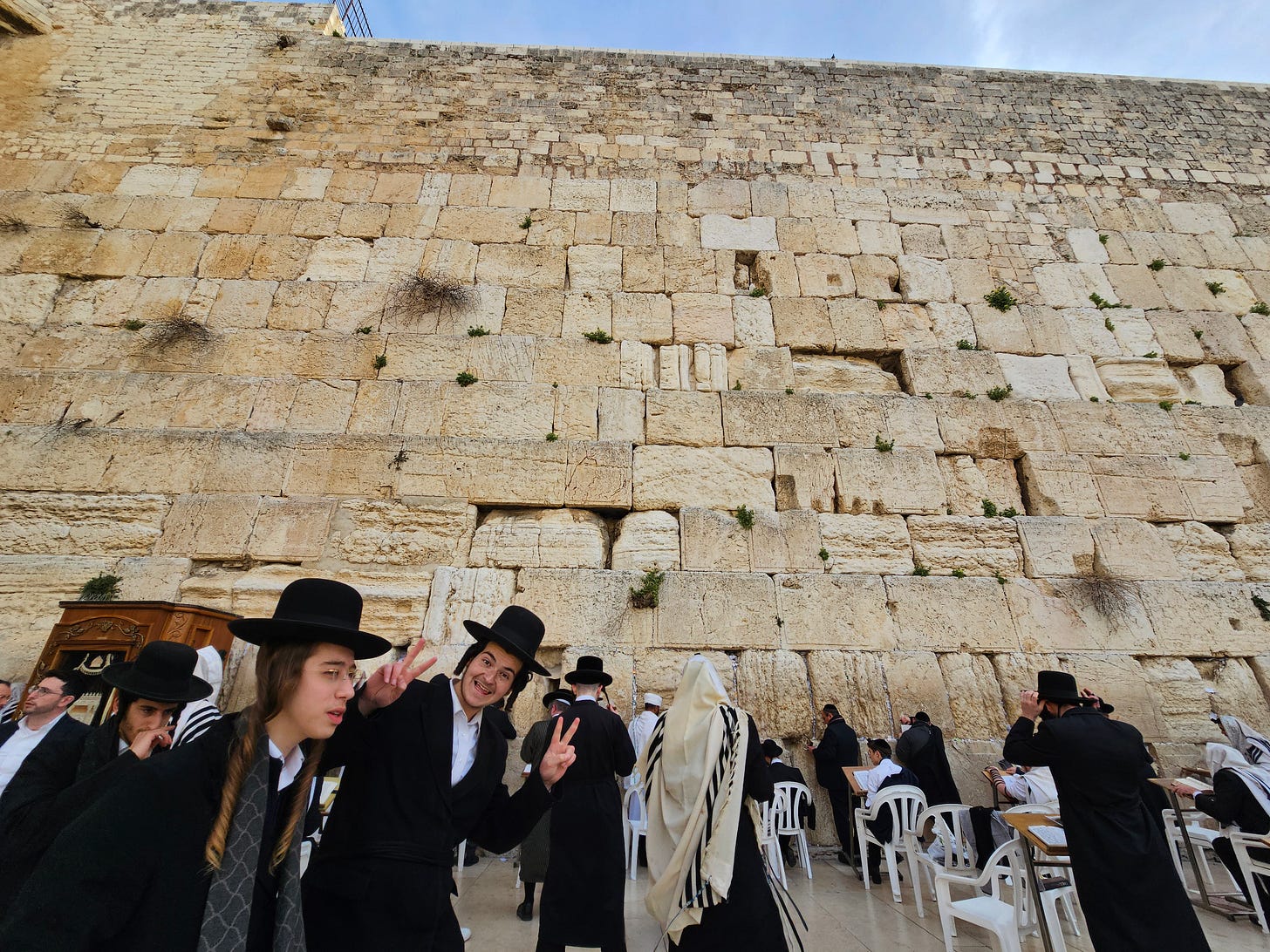
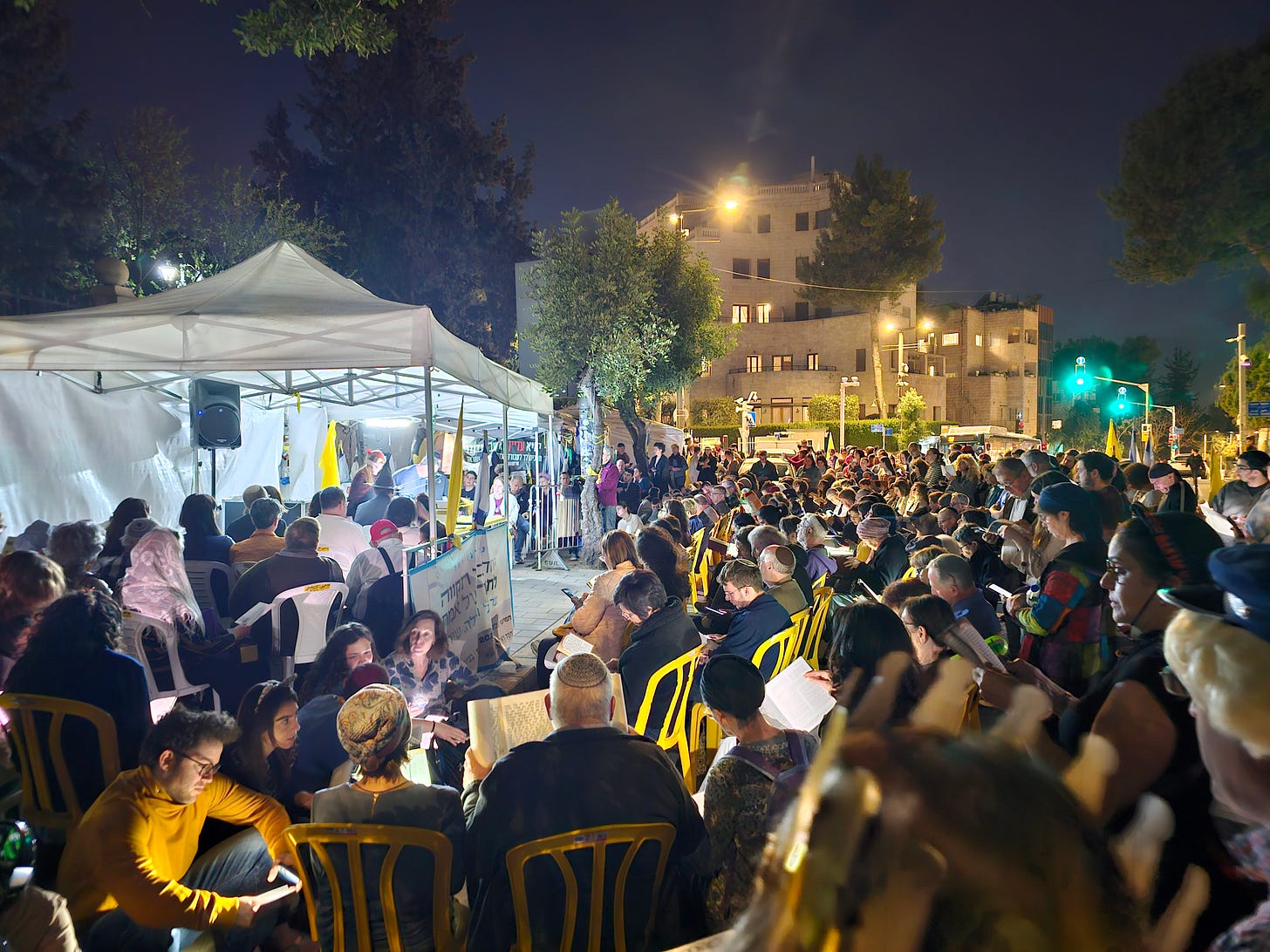
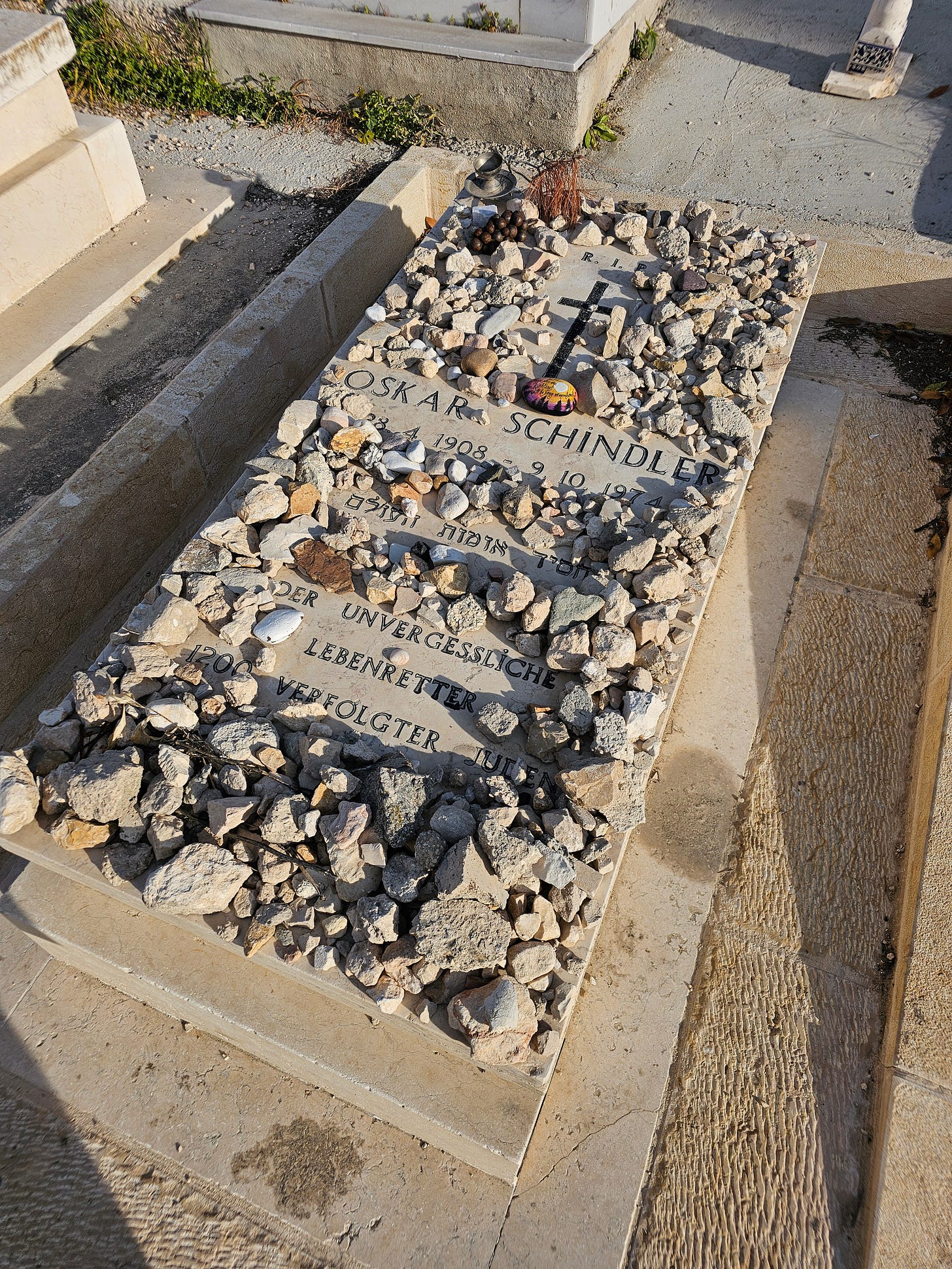
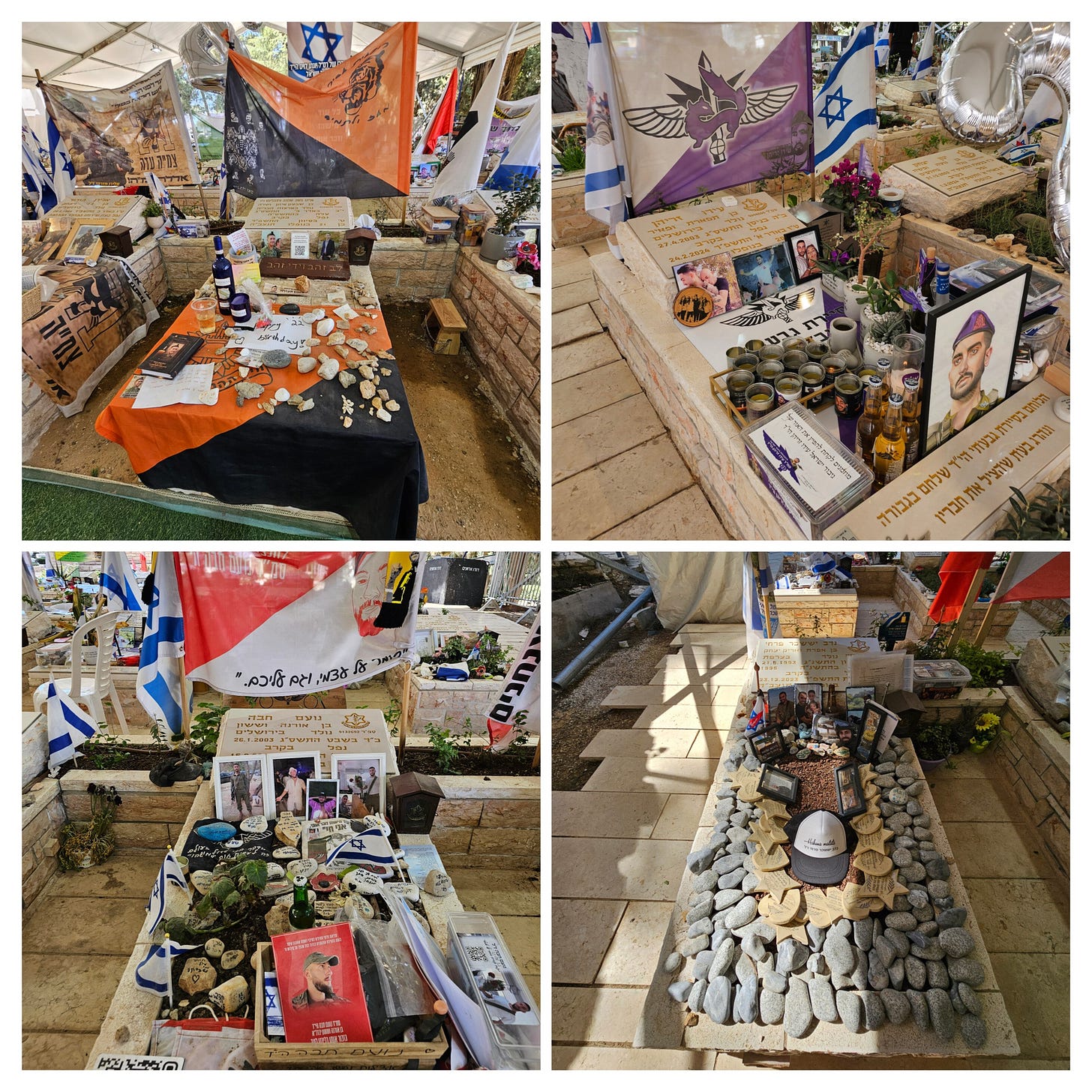
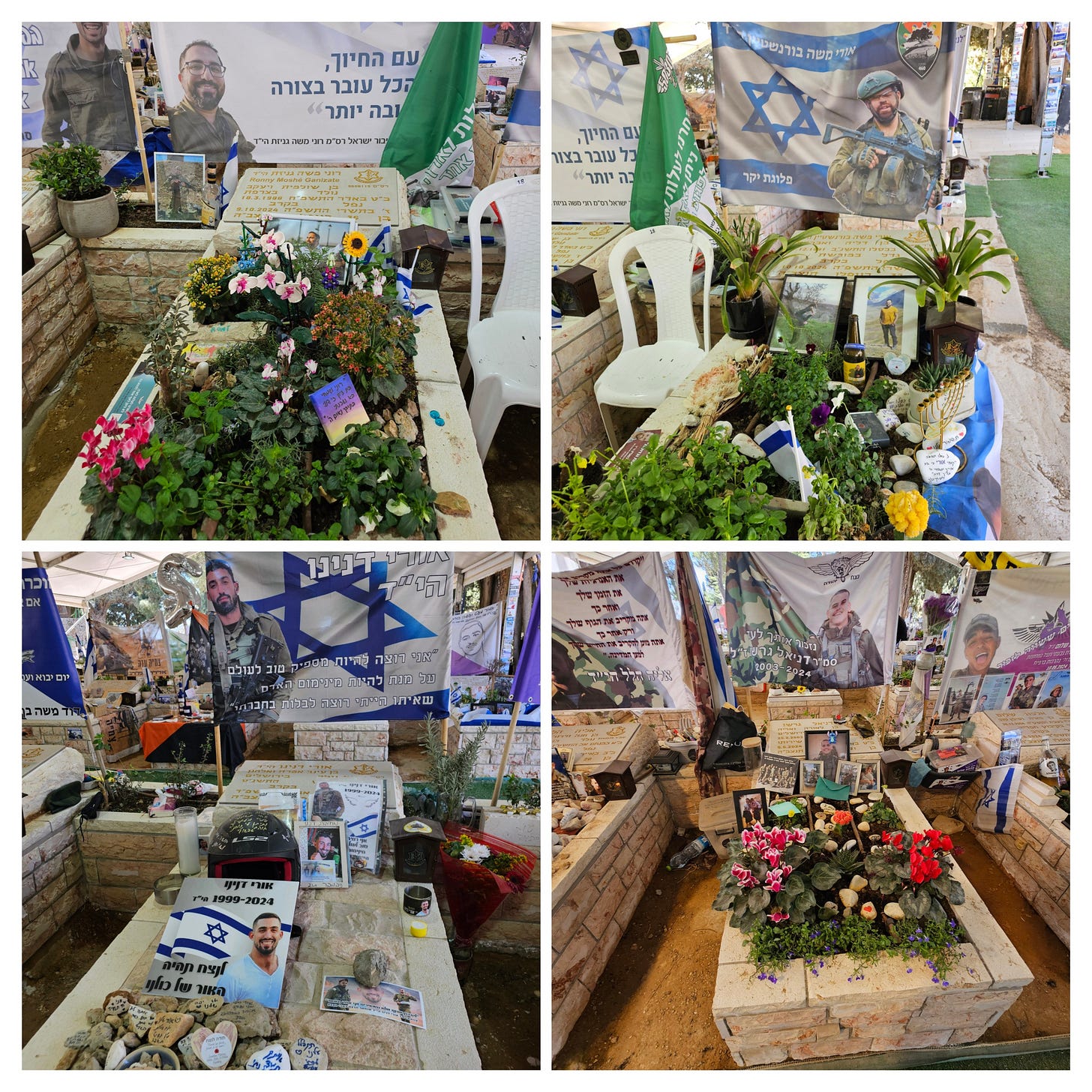
Such a powerful one. Thanks for sharing these.